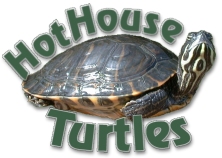

We are New Zealand's Only Turtle Specialists!
(TRADE SUPPLY ONLY)
P.O. Box 7057, Taradale, Napier4141, New Zealand
 |
 We are New Zealand's Only Turtle Specialists! (TRADE SUPPLY ONLY) P.O. Box 7057, Taradale, Napier4141, New Zealand |
REPTILE HEATING.(AIMED MORE TOWARDS HEATING FOR AUSTRALIAN DRAGONS)
Dragons require a basking spot in their terrarium which will provide a temperature of 35oC – 40oC. This is to be set up down one end of you enclosure. This way your Dragon can thermo-regulate. Thermo-regulation is what all Reptiles do. As they are cold blooded they must heat themselves up (outside this is achieved in the warmth of the sun) so they can be active enough to feed, digest food and go about their daily activities. Once up to temperature they can move about their enclosure. As they cool down they must return to their basking spot to heat up again. If their entire enclosure was 400C they would have nowhere to cool down and would over heat and eventually die. There are a few different ways of Heating enclosures or part of an enclosure to raise the temperature of your Reptile artificially. I have listed only two methods as this is what I have had experience with and both are very easy to set up and use. Ceramic Heat Lamps: These are a ceramic heat element designed not to give off light but plenty of heat, and also come in a range of wattage's. It is essential that these be used with a probe thermostat to avoid over heating of your terrarium and Dragon. These bulbs must be mounted inside a mesh protection cage to prevent burns to active Dragons and burns to the keeper by accidentally coming in contact with a hot bulb. The surface temperature of these heat emitters is in excess of 200oC so will do serious damage to skin of any type upon contact. As these bulbs give off a lot of heat they must be used in conjunction with ceramic fittings. These bulbs are expensive to purchase but will burn for approximately 10,000 hours. I have the temperature at 35oC for Bearded Dragons and 30oC for Water Dragons. Infrared Heat Bulbs: These are a specific red coloured Infrared Reptile bulb that reflects a lot of heat and come in a variety of wattage's. They are best used without a shade (this will prolong the life of the bulb). These bulbs must be mounted inside a mesh protection cage to prevent burns to active Dragons and burns to the keeper by accidentally coming in contact with a hot bulb. As these bulbs give off a lot of heat they must be used with ceramic fittings.
(In the above enclosure I have a 150 watt Ceramic Heat Emitter mounted inside a Safety Cage mounted at the top of the enclosure along side the UVB tube. There is also a 60 watt UVA heat lamp mounted down low inside a small Dome fitting. This keeps this large enclosure (900Wx900Lx1200H) with two basking points, yet providing plenty of cooler spots for the Bearded Dragons to thermo-regulate.) Heat Rocks, Heat Pads, and Under Substrate Heating Cables: I have read conflicting issues regarding Heating Rocks, Heat Pads and Heating Cables, and have avoided using these as I also believe that Reptiles are designed to absorb the heat directly on their backs, not their bellies. I have never seen a Reptile of any description lying on its back, feet in the air, soaking up the rays!!! I have also heard of Reptiles being cooked from the inside out by these forms of heating when thermostats malfunction. |
| Hot House Turtles Limited © 2022 |